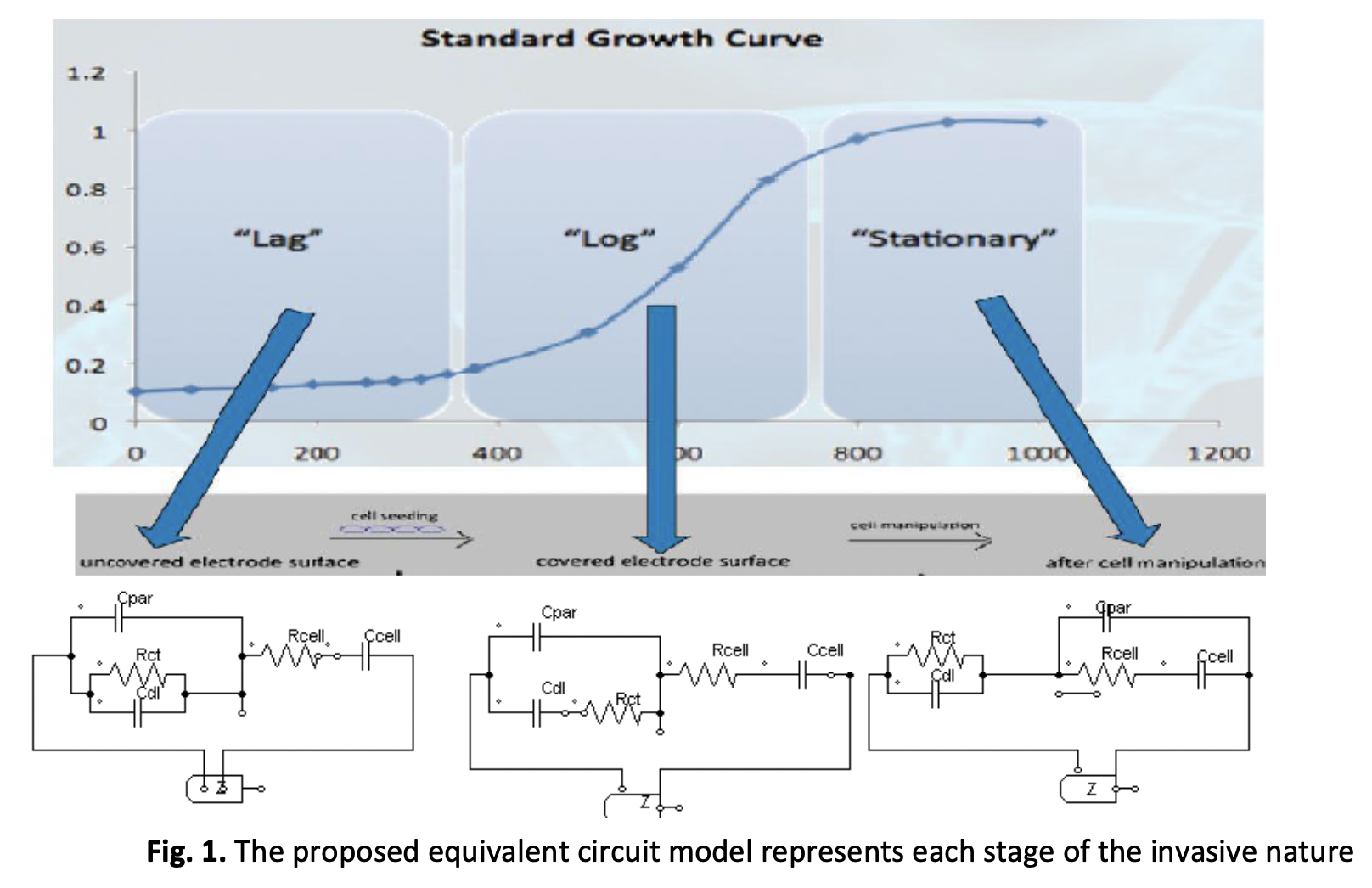Analysis of Impedance Based Sensor to Discover the Invasive Nature of A549 Lung Cancer Cell
DOI:
https://doi.org/10.37934/araset.41.2.238255Keywords:
Impedance based sensor, ECIS, Invasive nature, Equivalent circuit model, Lung cancer cellAbstract
Numerous studies have been conducted to investigate the effectiveness of impedance-based sensors in detecting the invasive behavior of cancer cells, specifically through the use of Electric Cell-substrate Impedance Sensing (ECIS) methodology. However, the current equivalent circuit models used to represent the invasive nature of cancer cells have limitations and inaccuracies, and there has been a lack of utilization of mathematical and data analysis software to better understand the growth and invasive behavior of these cells. To address these gaps, this research aims to measure the impedance of A549 lung cancer cells, develop a simplified equivalent circuit model, and analyze the results using mathematical and data analysis software. The invasive behavior of A549 cells will first be studied through impedance measurements, and then a circuit model will be designed and simulated using software tools to reveal the true invasive nature of these cells. Finally, rigorous mathematical analysis and the use of suitable data analysis software (such as Matlab Powergui and Simulink, EIS Spectrum Analyzer, and Plotly) will be applied to gain a comprehensive understanding of the morphological behavior of the cells. The experimental results of this research are expected to align with previous findings, and a quadratic equation will be derived to predict the body's resistance of the A549 lung cancer cell using mathematical and data analysis approaches.
Downloads




























